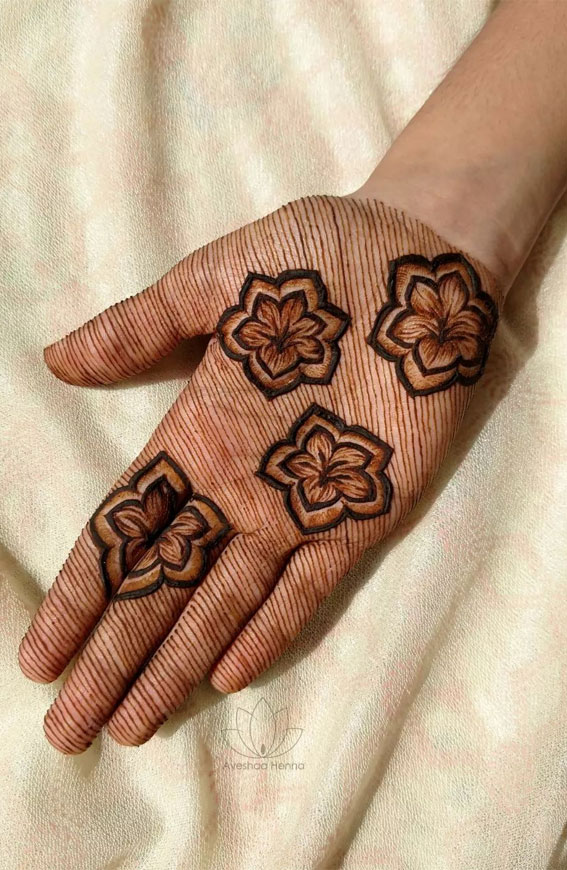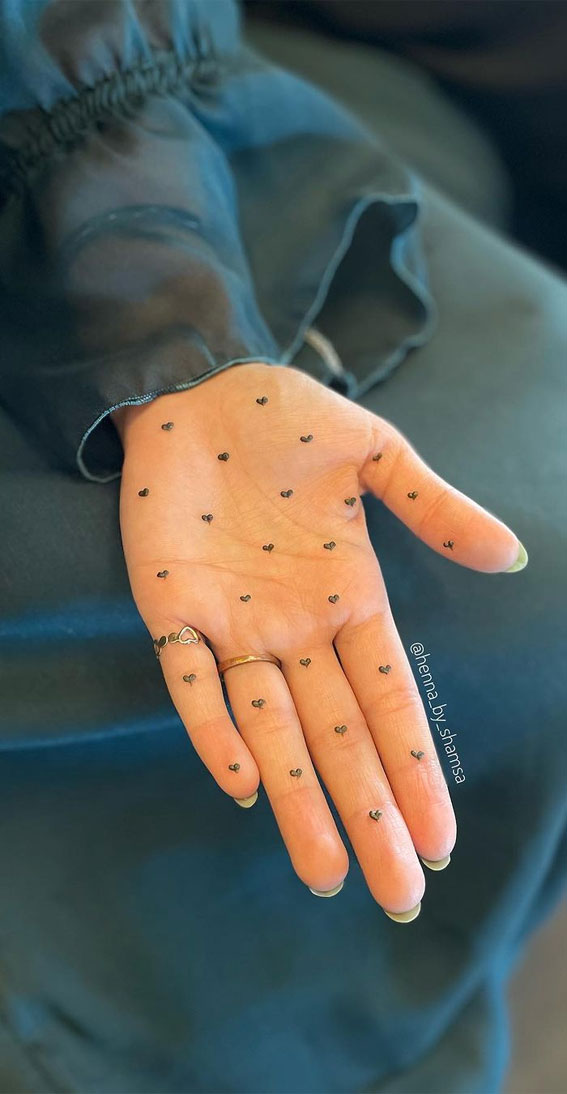Let's talk about henna designs, shall we? This ancient art form has been around for centuries, and yet it continues to captivate people all over the world. From intricate patterns on wedding dresses to bold geometric shapes that adorn hands and feet, henna designs have become a cultural phenomenon. Whether you're attending a traditional ceremony or just want to spice up your look, henna offers a beautiful, temporary way to express yourself.
Henna designs are more than just a form of decoration; they're a symbol of tradition, culture, and self-expression. People from all walks of life are embracing this art form, and for good reason. It's not just about the stunning visuals—it's also about the story behind each design and the connection it creates between the artist and the wearer.
So, why has henna become so popular? Well, it's not just because it looks amazing. There's something magical about the way henna designs transform the skin into a canvas, allowing people to experiment with art without committing to permanent tattoos. Stick with me as we dive deep into the world of henna designs and uncover everything you need to know!
Read also:Chun Woohee The Rising Star Who Captivated Hearts
Table of Contents
- The Fascinating History of Henna Designs
- Different Types of Henna Designs
- How Henna Designs Are Applied
- Caring for Your Henna Design
- Benefits of Using Henna Designs
- Tools and Materials Needed for Henna Art
- Current Henna Design Trends
- Henna Designs in the Celebrity World
- Cost of Henna Designs
- Pro Tips for Creating Stunning Henna Designs
The Fascinating History of Henna Designs
Henna has been around for thousands of years, and its origins can be traced back to ancient Egypt, India, and the Middle East. Back in the day, henna wasn't just used for body art—it was also used as a natural dye for hair, nails, and even fabric. People in desert regions discovered that applying henna paste to their skin helped cool them down, which is kinda wild if you think about it.
Fast forward to today, and henna designs have evolved into an art form that's celebrated worldwide. Different cultures have their own unique styles, from the delicate floral patterns of Indian mehndi to the bold geometric designs of North African henna. It's like a global art movement that keeps growing and evolving.
How Henna Became a Global Phenomenon
So, how did henna designs go from being a cultural tradition to a global trend? Well, globalization played a big role, but so did social media. Platforms like Instagram and Pinterest have made it easier for people to discover and share henna designs from all over the world. Plus, celebrities like Priyanka Chopra and Deepika Padukone have been rocking henna at red carpet events, which has definitely helped bring it into the spotlight.
Different Types of Henna Designs
Now, let's talk about the different types of henna designs you can choose from. Each style has its own unique flair, and the possibilities are pretty much endless. Here are some of the most popular types:
- Indian Mehndi: Known for its intricate floral and paisley patterns, Indian mehndi is often used in weddings and other celebrations. It's all about the details, and the designs can cover entire hands and feet.
- Arabic Henna: Arabic designs tend to be more open and less intricate than Indian mehndi. They often feature large floral patterns and are perfect for those who want a bold, eye-catching look.
- African Henna: African henna designs are all about geometric shapes and bold lines. They're usually simpler than Indian or Arabic styles but no less stunning.
- Modern Fusion: This is where things get really creative. Modern fusion henna combines elements from different cultures to create unique, one-of-a-kind designs. Think abstract patterns, mandalas, and even pop culture references.
There's something for everyone in the world of henna designs, whether you're into traditional patterns or modern twists. The key is to find a design that resonates with you and fits your personal style.
How Henna Designs Are Applied
Applying henna might seem intimidating at first, but it's actually a pretty straightforward process. Here's a quick breakdown of how it works:
Read also:Zoey Sinn The Rising Star In The Digital Age
First, the artist prepares the henna paste, which is made from powdered henna leaves, water, and sometimes essential oils. Once the paste is ready, it's transferred to a cone or applicator bottle. The artist then carefully applies the paste to the skin, using a steady hand to create the desired design.
After the design is complete, the paste is left to dry for a few hours. Once it's dry, the paste starts to crack and flake off, leaving behind a beautiful stain on the skin. The longer you leave the paste on, the darker and more vibrant the design will be.
Common Mistakes to Avoid
When it comes to applying henna, there are a few common mistakes to watch out for. For starters, don't rush the process. Letting the paste sit on your skin for at least 4-6 hours is crucial for getting a rich, dark stain. Also, avoid washing the area too soon after the paste is removed. Letting the design "set" for a day or two will help it last longer.
Caring for Your Henna Design
Once you've got your henna design, it's important to take good care of it so it lasts as long as possible. Here are a few tips to keep in mind:
- Avoid soaking the area in water for the first 24-48 hours. This means no long showers or swimming pools!
- Use a gentle moisturizer to keep the skin hydrated. Coconut oil and olive oil are great options.
- Stay away from harsh chemicals and abrasive soaps, as they can fade the design faster.
- If you're going to be in direct sunlight, try to cover the area to prevent the design from fading.
With proper care, a henna design can last anywhere from one to three weeks, depending on the location and how well you take care of it. It's like having a piece of art on your skin that slowly fades away, leaving no trace behind.
Benefits of Using Henna Designs
Aside from being absolutely gorgeous, henna designs offer a number of benefits. For starters, they're completely temporary, which makes them a great option for people who want to experiment with body art without committing to a permanent tattoo. Plus, henna is made from natural ingredients, so it's generally safe for most people to use.
Henna also has some pretty cool health benefits. The paste has cooling properties, which can help soothe irritated skin and reduce inflammation. It's also believed to have antibacterial properties, making it a great choice for people with sensitive skin.
Why Choose Henna Over Permanent Tattoos?
Permanent tattoos are awesome, don't get me wrong, but they're a lifelong commitment. Henna, on the other hand, gives you the freedom to change things up whenever you want. You can try out different designs, colors, and styles without worrying about permanence. Plus, if you're not ready for a tattoo but still want to express yourself through art, henna is the perfect solution.
Tools and Materials Needed for Henna Art
If you're thinking about trying your hand at henna art, here are the basic tools and materials you'll need:
- Henna powder (make sure it's high quality and organic)
- Water or lemon juice
- Essential oils (like eucalyptus or tea tree oil) to enhance the color
- A cone or applicator bottle for applying the paste
- Gloves to keep your hands clean
- A small brush or toothpick for detailing
Once you have all your supplies, the next step is to practice. Start with simple designs and work your way up to more complex patterns. Remember, henna art is all about patience and precision, so don't get discouraged if your first few attempts aren't perfect.
Current Henna Design Trends
Henna designs are constantly evolving, and there are always new trends to keep an eye on. Right now, minimalist designs are really popular, especially among younger generations. These designs often feature clean lines and simple shapes, making them perfect for everyday wear.
Another trend that's gaining traction is the use of white henna. Unlike traditional henna, which leaves a reddish-brown stain, white henna creates a temporary design that's visible immediately. It's great for events where you want your design to stand out right away.
How Social Media is Shaping Henna Trends
Social media platforms like Instagram and TikTok have played a huge role in shaping henna trends. Artists from all over the world share their work online, inspiring others to try new styles and techniques. It's a great way to discover fresh ideas and connect with other henna enthusiasts.
Henna Designs in the Celebrity World
Celebrities have been rocking henna designs for years, and they continue to influence trends in the world of body art. From Bollywood stars to Hollywood icons, many famous faces have embraced henna as a way to express themselves and celebrate their heritage.
Take Priyanka Chopra, for example. She's known for her stunning mehndi designs, which often incorporate intricate patterns and bold colors. Meanwhile, celebrities like Kim Kardashian have experimented with henna as a way to try out new looks without committing to permanent tattoos.
A Table of Famous Celebrities Who Love Henna
| Celebrity Name | Henna Style | Occasion |
|---|---|---|
| Priyanka Chopra | Indian Mehndi | Weddings and Festivals |
| Deepika Padukone | Delicate Floral Patterns | Red Carpet Events |
| Kim Kardashian | Minimalist Designs | Photo Shoots |
Cost of Henna Designs
The cost of henna designs can vary depending on several factors, including the complexity of the design, the size, and the artist's experience. On average, you can expect to pay anywhere from $20 to $100 for a basic design. For more elaborate designs, especially those that cover larger areas like hands and feet, prices can go up to $200 or more.
If you're on a budget, consider doing your own henna at home. With a little practice, you can create beautiful designs without spending a fortune. Just make sure to invest in high-quality henna powder and tools to get the best results.
Pro Tips for Creating Stunning Henna Designs
Whether you're a beginner or a seasoned pro, here are a few tips to help you create stunning henna designs:
- Practice on paper or a sketchbook before applying henna to skin.
- Use a steady hand and take your time with each stroke.
- Experiment with different patterns and styles to find what works best for you.
- Don't be afraid to mix and match elements from different cultures to create something truly unique.
Henna designs are all about creativity and self-expression, so don't be afraid to let your imagination run wild. The more you practice, the better you'll get, and before you know it, you'll be creating designs that rival the pros.
Conclusion
Henna designs are a beautiful way to express yourself and connect with your cultural heritage. Whether you're into traditional patterns or modern twists, there's a henna design out there for everyone. By following the tips and tricks we've covered in this article, you can create stunning designs that will turn heads and leave a lasting impression.
So, what are you waiting for? Grab some henna paste and start experimenting! And don't forget to share


